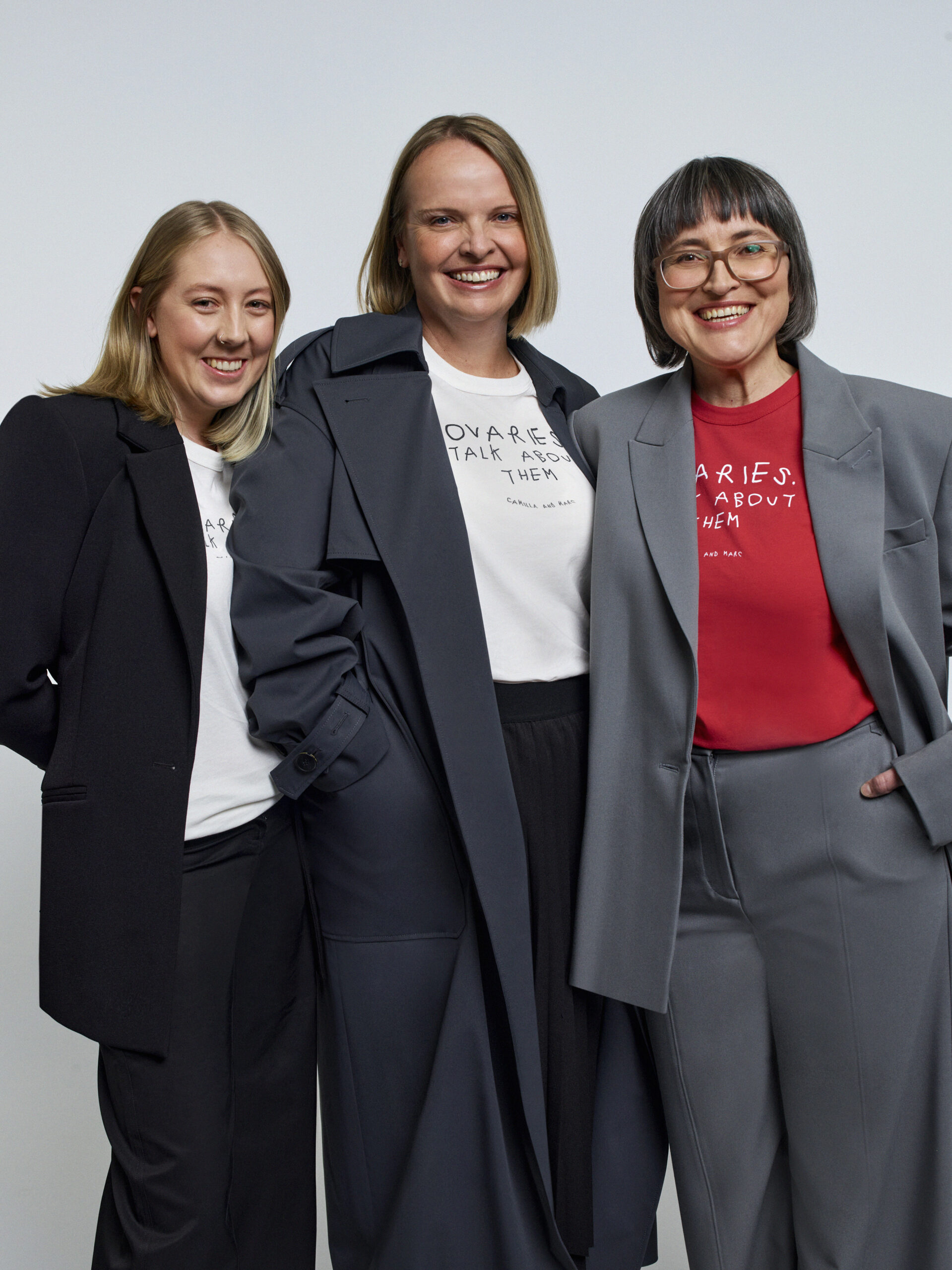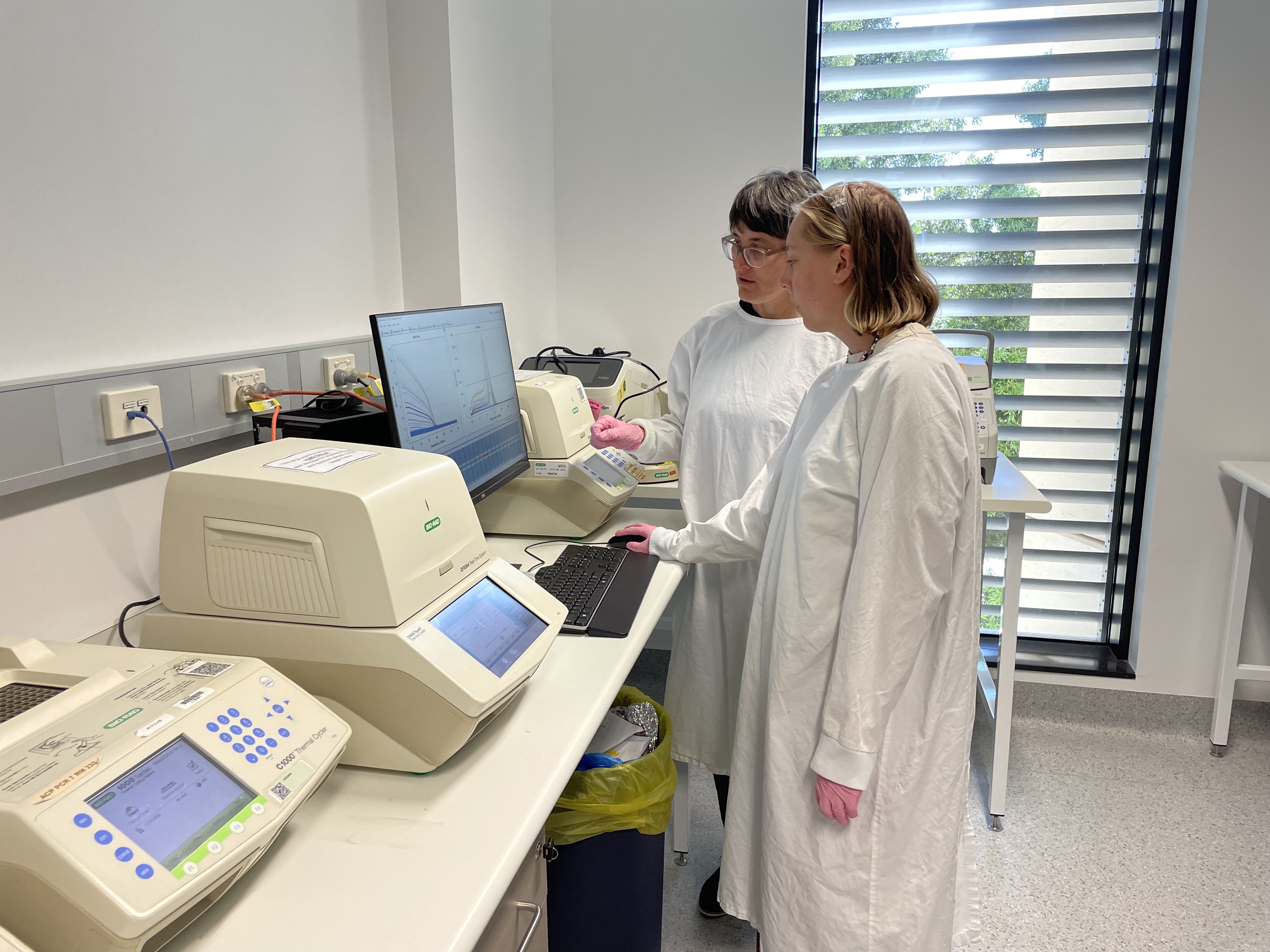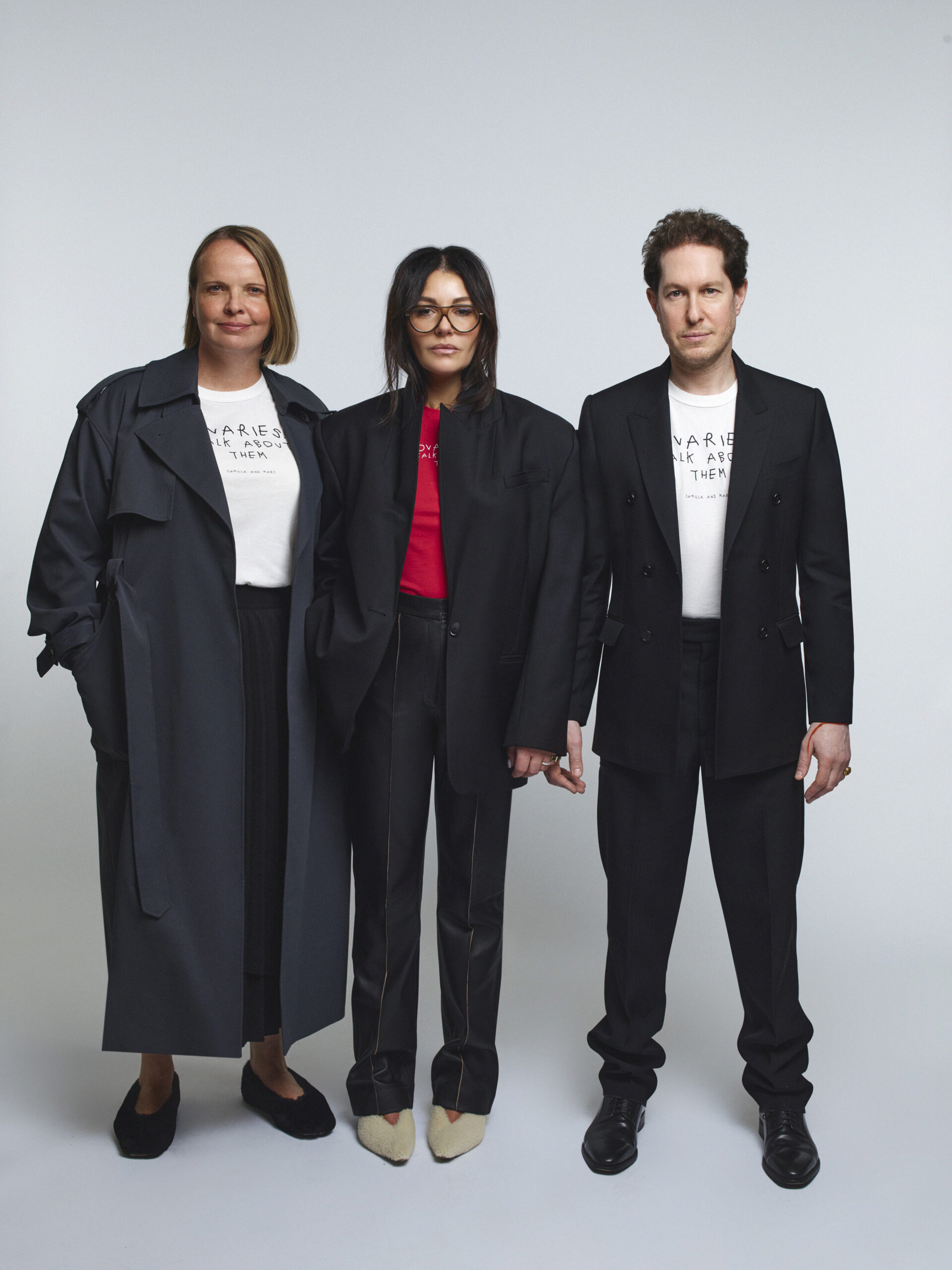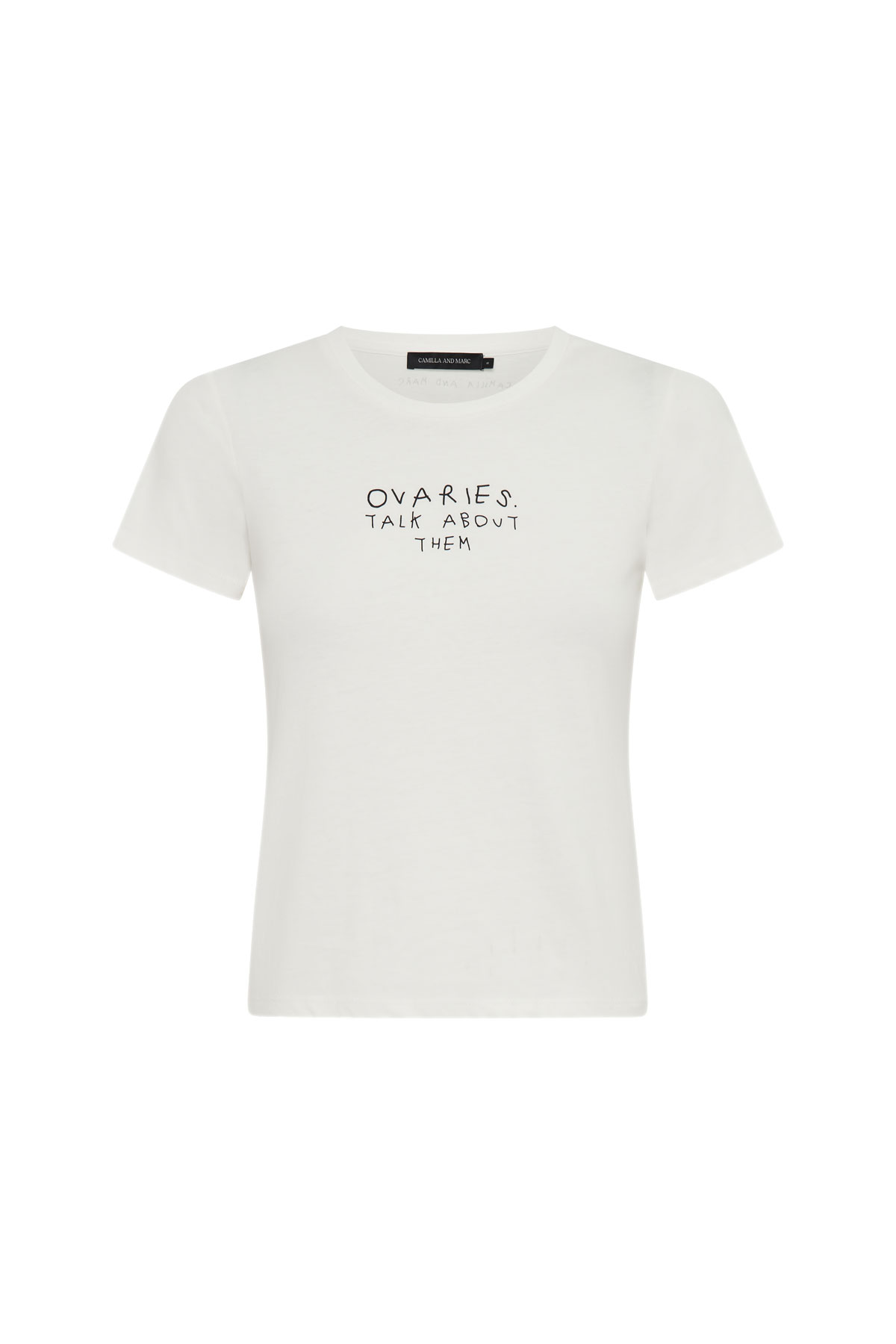News feed

Down the winding hallways of the Lowy Cancer Research Centre at the University of New South Wales, there’s an inconspicuous room lined with what you’d imagine the first home computers looked like. These are PCR tests. Not the ones we’ve known during COVID, but ones helping a team of women rid the world of ovarian cancer. Though the atmosphere of the lab feels calm, almost casual, I’m quickly told by Dr Kristina Warton, head scientist under Professor Caroline Ford, that there’s a strict ‘no leaning’ policy here. I’m reminded of just how high-stakes their work is when she warns me again, minutes later, and again after that.
I’m not quite sure what I expected lab life to be like, but the pace came as a surprise. Fewer flurried researchers running around bunsen burners and more calm, collected professionals. It’s an urgent issue they’re working on, but in saving lives, nothing can be rushed, and getting it right is everything to these people. Not because it’s their job but because their objectives will change the world.
In February 2023, GRAZIA had the immense privilege of visiting the research centre and chatting with the figures fighting for this progress.
“People talk about finding a cure for cancer as a kind of miracle thing,” explains Dr Warton. “But an early detection test for cancer would have the same outcome for cancer patients. So that’s what we’re about in the lab.”
At this point in time, there is no test, no symptoms, and certainly no cure for ovarian cancer. It’s the sixth most common cause of cancer-related death for Australian women, with only 29% of those diagnosed with advanced-stage classifications predicted to survive beyond five years. And yet, most affected will be unaware until it expands into other forms. While most parts of our bodies can be seen or felt in ways that make screening for abnormalities possible, ovaries are positioned deep inside the abdominal cavity, making it almost impossible to detect cancerous tumours before they are already at critical stages.
Technology has come far, and millions upon millions of lives have been saved by advancements in imaging and screening, but when it comes to the reproductive system, there’s simply not enough awareness.
Dr Warton and research assistant Teagan Fisher have been part of the team working to change this.
“What we’re doing is working to develop a blood test that will diagnose ovarian cancer at its early stages,” she says, putting it at its most rudimentary.
“What happens with cancer is it will start off somewhere solid, and then grow a little bit bigger and a little bit bigger, the cells losing control of how fast they divide,” she explains. “If the cancer is left in place, parts of the cells will detach. Typically, by the time somebody comes in with ovarian cancer, you have the tumour where it started, but it’s also spread to all these other places in the abdomen.”
“For that reason, early diagnosis of cancer makes all the difference.”
While there are still no certainties in the realms of causes or symptoms, pinpointing the tumour at its onset can be the difference between surviving and not.
“If you can find that tumour at that starting point, you can cut it out with surgery, and it’s stopped in its tracks. That’s the cure.”
Even when patients or medical professionals are suspicious of ovarian cancer, the next steps are a roller coaster.
“It’s not the same as say, colon cancer, where you have symptoms, and then you can have a colonoscopy, which is fairly unintrusive,” Dr Warton tells me. “There’s no way to get to the ovaries gently. And the imaging technology we have just isn’t there yet.”

It’s not to say that people haven’t tried in the past, but according to Dr Warton, there’s plenty of promise in their approach. Even as someone who loves to get stuck into the pages of WebMD, the processes are complicated. But what the lab is essentially trying to do through blood work experiments, is identify a process called methylation that occurs in cancerous DNA.
“We’re looking for DNA with a tumour methylation pattern in the blood,” she explains. “So because the cells have already died, the DNA we want to look at is in the plasma element of the blood. We collect [blood] samples from healthy volunteer donors, spin the blood in a centrifuge to extract DNA, and then compare the DNA that we have from healthy women with ovarian cancer, and look for differences.”
“It’s quite simple,” she laughs.
If you’re not quite following, the key takeaway is that developing this test would save countless lives, but the work that Professor Ford and her team are doing has faced many roadblocks. As you might’ve clocked, a lot of expenses go into running a project of this magnitude. Despite being a small team, the money simply isn’t there to support all of these labs, and ovarian cancer has long been overlooked.
“It’s not cheap,” Dr Warton says, and standing amongst it all, I could already see that. “Between staffing, lab chemicals and reagents, equipment costs, machines—it all adds up.”
While you’d be forgiven for thinking otherwise, research teams like theirs are not entirely funded by the government, universities or any other science body. There are grants available, but the reality is that working on applications for these is a full-time job in and of itself. Without guaranteeing anything at the end, objectives need to be shifted, and the actual research takes a backseat.
“Even if we get funding, it may only be for one or two years. So, our approach has to be split into two streams: what we can achieve at this time and planning for the possibility of an extension. It becomes a constant balance.”
Instead, Professor Ford has another angel investor.

You might know them as the stylish siblings behind CAMILLA AND MARC, but for Creative Director Camilla Freeman-Topper and CEO Marc Freeman, the plight of ovarian cancer research is deeply personal. At just 11 and 13 years old, respectively, the two experienced the devastation of the disease first-hand when their mother, Pamela, passed away at 42 years old, just two years after receiving an ovarian cancer diagnosis.
Four years ago, the duo kicked off their first campaign, Ovaries: Talk About Them, hoping to raise awareness of the often-forgotten disease and generate funds for the lab by selling limited edition t-shirts and sweats. At this point, the brand has raised over AU$1.7 million—every dollar of which has gone directly to the lab. This incredible funding has enabled the UNSW Ovarian Cancer Research Group to employ two key female scientists to focus solely on this work, as well as the essential infrastructure and equipment they need, including a quantitative PCR machine, freezers for blood bio-banking, a liquid-handling robot, and a Qubit machine (the latter measures the concentration of DNA).
Because of this, in July 2024, the lab made the incredible announcement of a breakthrough: a world-first development of a unique 3-target signature using DNA biomarkers that detects all types of early-stage ovarian cancer. This significant achievement could see early detection blood tests go to clinical trials as early as 2026.
“This signature is highly specific to ovarian cancer, and through extensive testing, we’re confident it will not pick false positives,” explains Dr Caroline Ford of the groundbreaking update. “Further to this, we are extremely excited to share some early data that this signature appears to detect all subtypes of ovarian cancer.”
“The breakthroughs that have been made with the early detection test have been nothing short of extraordinary. We feel immense pride towards the team at UNSW for their tireless efforts, as well as everyone who has continually supported our ‘Ovaries. Talk About Them.’ campaign,” said Camilla about the progress made. “Without this funding, we would not have reached this significant milestone. None of us would be here without ovaries, and this disease has been silenced for too long. Millions continue to be affected every year, yet there is still no test. It is not good enough. My mother deserved better. We all deserve better.”
“The development of the world’s first 3-target signature to detect early stages of ovarian cancer is a ground-breaking achievement in medical science,” echoed Marc. “Today, this test stands as the only DNA-based method globally to have reached this advanced stage in ovarian cancer detection. This innovation not only offers optimism for an early detection test to be taken to clinical trials by 2026 but reaffirms the importance of this initiative in significantly impacting the diagnosis of this devastating disease.”
“None of us would be here without ovaries, and this disease has been silenced for too long.”
While there’s a lot of mystical machinery about in the lab, this year’s momentous headway proves that humans are the real heroes here. The passion and dedication that Dr Ford and her team embody are deeply humbling, and witnessing the tangible good that can come from community support is quite profound.
The lab may have initially felt unassuming and steeped in administrative simplicity upon our visit, but there is certainly nothing simple about the work these women are doing. Changing the world is essentially their MO, but they’re just motivated by the idea of helping one person.
“We just want this to work for somebody.”
And though I wasn’t entirely equipped to lend a hand with the research—and I couldn’t hardly stop with the leaning—being able to contribute to this journey by participating in CAMILLA AND MARC’s annual campaign is essential for continued progress.
“Funding for our research is always our biggest hurdle,” Dr Ford tells me. “These diseases have been overlooked for so long, and we have so much catching up to do to bring the level of care up to what we already have in other cancer types and diseases. We need a significant investment in research to provide appropriate evidence-based medicine to the people affected by these diseases.”
Support CAMILLA AND MARC’s ‘Ovaries: Talk About Them’ by purchasing from their range of men’s, women’s and kids’ ready-to-wear from the campaign—on sale now. Featuring poignant designs created in-house by Camilla Freeman-Topper and Marc Freeman, these limited-edition pieces will also be available in CAMILLA AND MARC boutiques across the country. Those who purchase the designs are encouraged to share their experience with the hashtags #ovariestalkaboutthem and #CamillaAndMarc.











